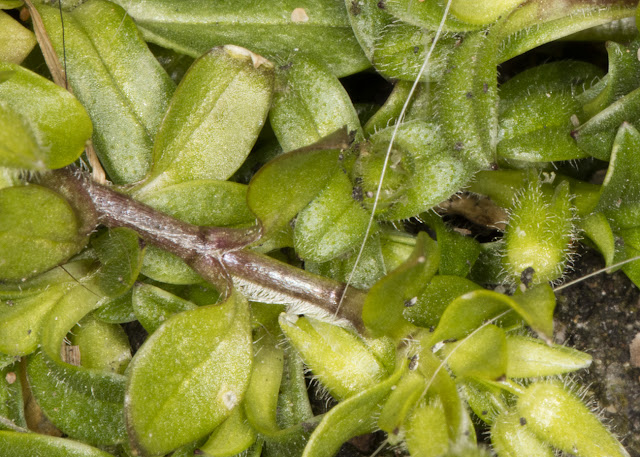 |
| Bourne Way, Hayes. April 2016 |
They have probably been there for years, but I have simply not noticed them.
This is the first. Not a showy plant, but quite interesting from the botanical viewpoint. And literally under my feet.
Here is an asphalt pavement which has been down long enough to develop some cracks, and the cracks have little spots of greenery in them.
 |
| Bourne Way, Hayes. April 2016 |
At first glance I thought this was Common Chickweed, and even a closer look did not disabuse me because this plant has a line of hairs along one side of its stem, a characteristic of chickweed.
However, even when it was only in bud, looking closer still showed that it was quite hairy, which meant that it had to be a Mouse-ear, not a Chickweed.
 |
| Little Mouse-ear, Cerastium semidecandrum. Bourne Way, Hayes, 9 April 2016. |
 |
| Little Mouse-ear, Cerastium semidecandrum. Bourne Way, Hayes, 12 April 2016. |
I received some odd looks from passers-by as I knelt down to photograph this plant - which I did several times over the last few days. But even though it is quite inconspicuous, I found it exciting to find something unexpected in such an unlikely spot. It's close to the station, and quite a busy pavement in the rush hours. The book says this species normally grows on open sandy ground. This is not that!
I had help from people on the iSpot site in identifying this one.
(Later addition: This specimen has now been weed-killed out of existence by the Council, but never mind: now that I have my eye in for its appearance I have found a healthy bank of it about 50 yards away.)
No comments:
Post a Comment